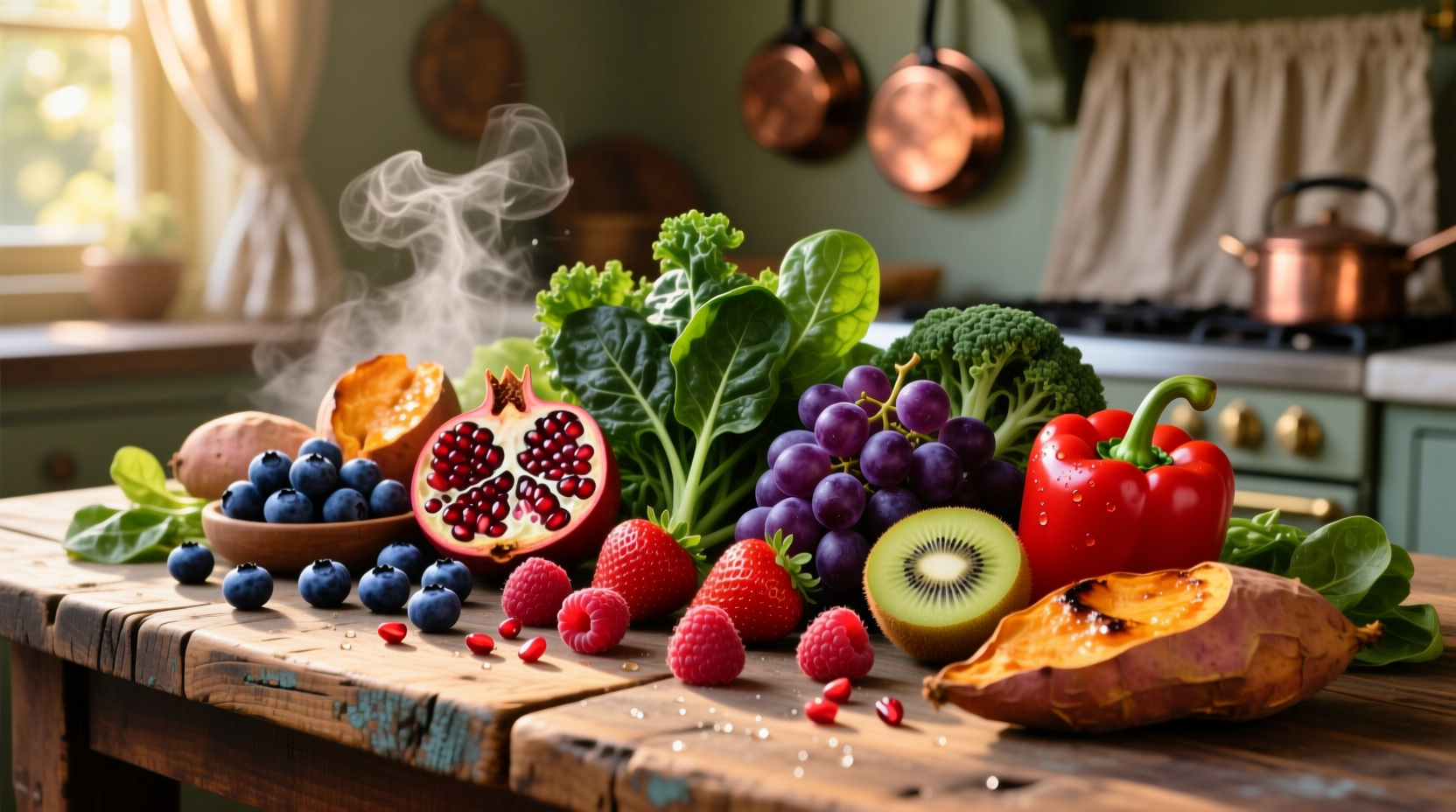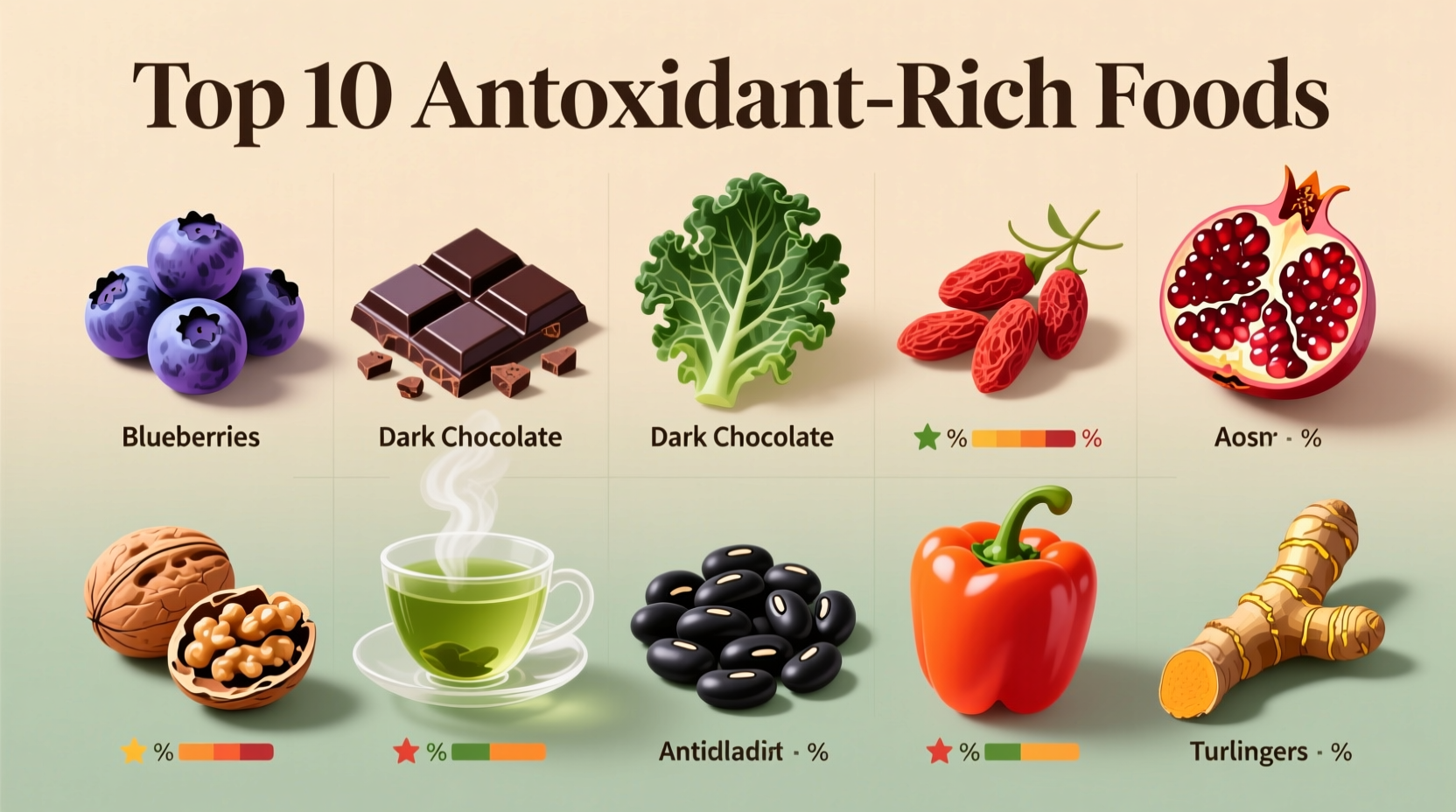Discover exactly which foods deliver the most potent antioxidant protection and how to maximize their benefits in your daily diet. This evidence-based guide cuts through nutrition myths with scientifically verified rankings and practical eating strategies backed by nutritional research.
Why Antioxidant-Rich Foods Matter for Your Health
Antioxidants neutralize harmful free radicals that damage cells and contribute to chronic diseases. The Oxygen Radical Absorbance Capacity (ORAC) scale measures a food's antioxidant capacity, with higher values indicating stronger protective effects. Research from the National Institutes of Health confirms that diets rich in high-ORAC foods correlate with reduced risk of cardiovascular disease and age-related cognitive decline.
Unlike supplements, whole food sources provide complex antioxidant profiles that work synergistically. The USDA's landmark study on food antioxidants revealed that certain foods contain up to 100 times more antioxidants than others, making strategic dietary choices essential for optimal protection.
Top Antioxidant Powerhouses: Science-Backed Rankings
Based on comprehensive ORAC analysis from USDA FoodData Central, these foods consistently demonstrate exceptional antioxidant capacity. Each entry includes practical serving suggestions to maximize nutrient absorption.
| Food | ORAC Value (μmol TE/100g) | Key Antioxidants | Daily Integration Tip |
|---|---|---|---|
| Wild blueberries | 13,400 | Anthocyanins, Vitamin C | Add frozen to morning smoothies |
| Dark chocolate (85%+) | 20,816 | Flavanols, Polyphenols | Pair with almonds for enhanced absorption |
| Pecans | 17,940 | Vitamin E, Ellagic acid | Toast lightly to preserve nutrients |
| Goji berries | 25,300 | Zeaxanthin, Beta-carotene | Soak before eating for better digestion |
| Artichoke hearts | 9,416 | Chlorogenic acid, Cynarin | Steam instead of boiling to retain nutrients |
Maximizing Antioxidant Benefits Through Smart Preparation
Cooking methods significantly impact antioxidant availability. Research published in the Journal of Agricultural and Food Chemistry demonstrates that:
- Steaming preserves 90% of antioxidants in cruciferous vegetables versus 60% with boiling
- Combining vitamin C-rich foods with iron sources increases absorption by 300%
- Light toasting enhances polyphenol availability in nuts without degradation
Professional chefs maximize antioxidant retention through these evidence-based techniques:
- The layering method: Combine berries with Greek yogurt (protein) and chia seeds (omega-3s) for sustained nutrient release
- Temperature control: Never exceed 350°F when roasting antioxidant-rich vegetables
- Acid pairing: Add lemon juice to cut fruits to prevent oxidation and boost vitamin C absorption

Evolving Science: How Antioxidant Understanding Has Changed
Nutritional science has dramatically refined our understanding of dietary antioxidants over the past two decades:
- 2004-2010: ORAC values became the primary measurement standard, leading to the "superfood" phenomenon
- 2011-2015: Research revealed the importance of food matrix effects - how antioxidants interact with other compounds
- 2016-2020: Scientists identified the gut microbiome's crucial role in metabolizing dietary antioxidants
- 2021-present: Focus shifted to bioavailability and synergistic effects between different antioxidant compounds
This evolution explains why whole foods consistently outperform isolated antioxidant supplements. The Harvard T.H. Chan School of Public Health emphasizes that food combinations create protective effects greater than the sum of individual components.
Practical Integration: Building Your Antioxidant-Rich Diet
Creating an effective antioxidant strategy requires understanding context boundaries. These evidence-based guidelines help optimize your approach:
When Antioxidants Deliver Maximum Benefit
- Post-exercise recovery: Consume berries within 30 minutes after intense workouts to reduce muscle inflammation
- Seasonal transitions: Increase dark leafy greens during high-pollution periods to combat environmental oxidative stress
- Travel periods: Incorporate citrus and pomegranate when flying to counter radiation exposure
Common Implementation Mistakes to Avoid
- Overheating antioxidant-rich oils (avocado, olive) beyond smoke point destroys compounds
- Peeling antioxidant-dense skins (apples, cucumbers) eliminates up to 50% of beneficial compounds
- Consuming high-antioxidant foods with calcium-rich dairy reduces absorption by 40-60%
For optimal results, rotate through different color groups weekly. The USDA FoodData Central database shows that purple foods (blueberries, eggplant) excel in anthocyanins, while orange foods (carrots, sweet potatoes) provide superior carotenoids. This color rotation strategy ensures comprehensive antioxidant coverage.
Your Antioxidant Action Plan
Start implementing these research-backed strategies today:
- Replace morning cereal with a berry-spinach smoothie (add chia seeds for omega-3 boost)
- Keep a small container of dark chocolate-covered almonds at your workspace
- Use herbs liberally - just 1 tablespoon of dried oregano contains more antioxidants than 1,200g of carrots
- Prepare a weekly antioxidant "power bowl" with artichokes, kidney beans, and pomegranate seeds
Consistency matters more than perfection. Research shows that incorporating just three high-antioxidant foods daily creates measurable biomarker improvements within 8 weeks. The key is sustainable integration into your existing eating patterns rather than drastic dietary overhauls.











 浙公网安备
33010002000092号
浙公网安备
33010002000092号 浙B2-20120091-4
浙B2-20120091-4